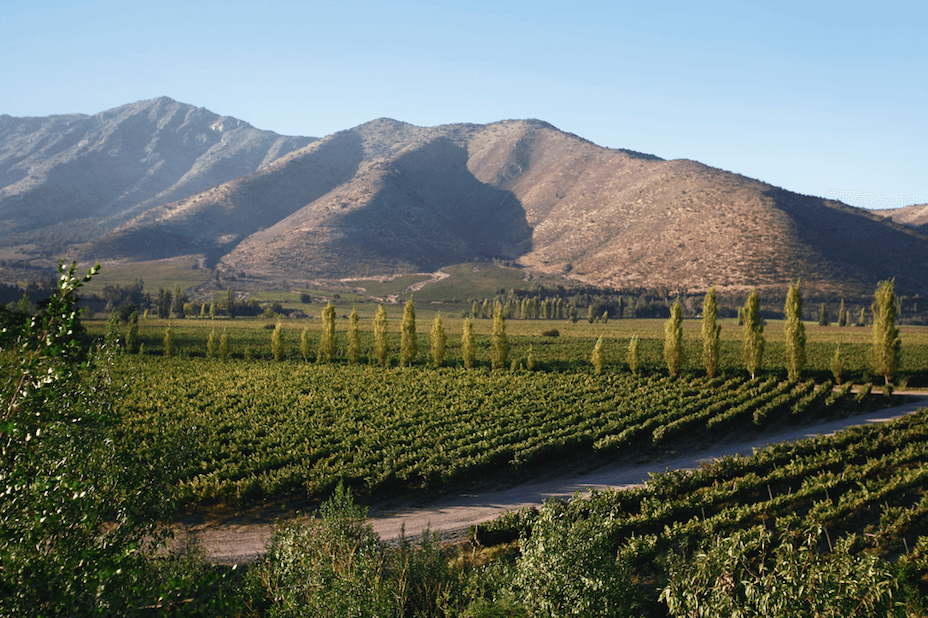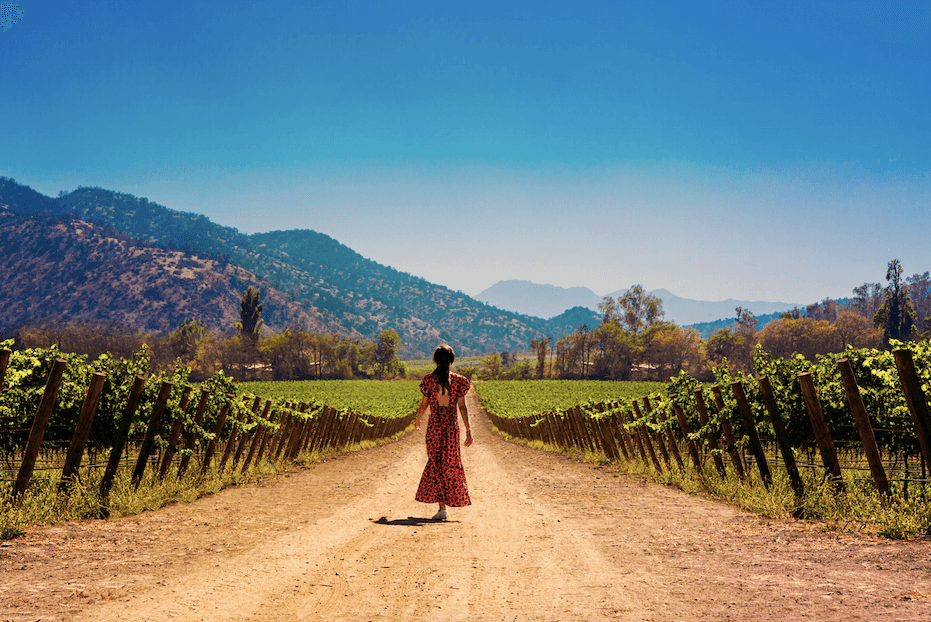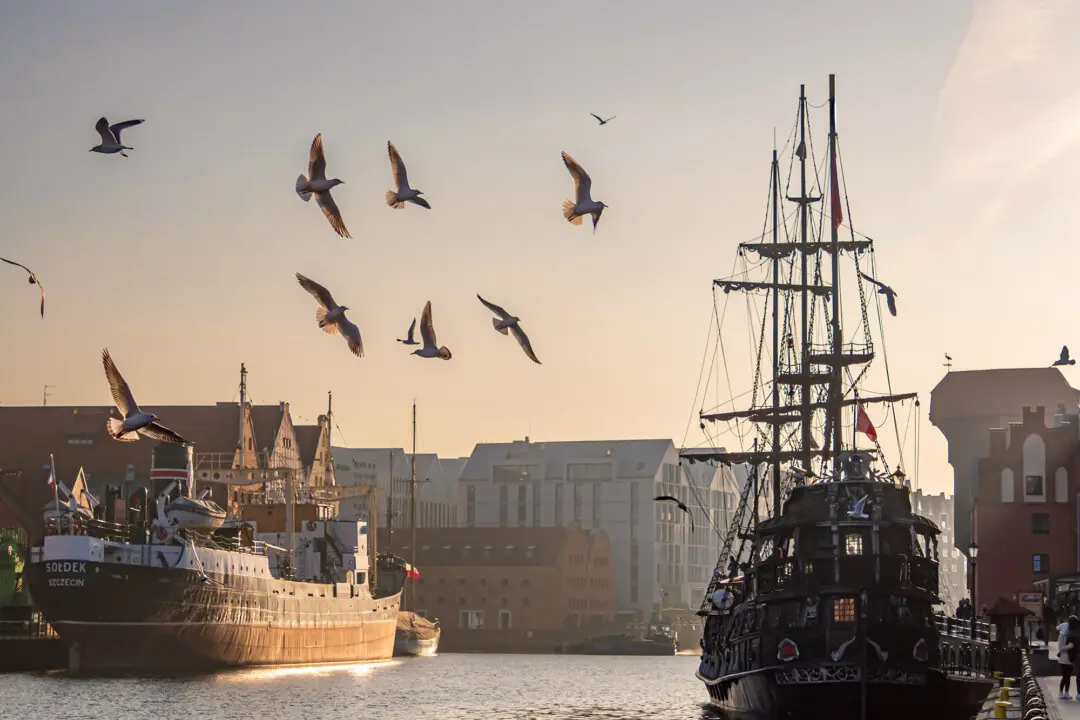Cradled by arid mountains, reached by a winding two-lane road, everything was peaceful there, in the middle of a Friday afternoon. You would never guess that, just to the north—less than an hour’s drive away—sits the southern reaches of one of South America’s great metropolises. Later, I’ll fight the traffic. But that seems a million miles away as I rolled up just in time for the final tasting tour of the day.

Santa Rita vineyards, near Santiago, Chile. Courtesy of Santa Rita





